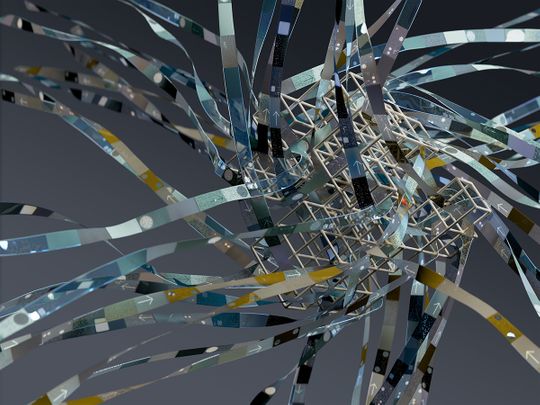
When a man named Jason M. Allen was announced as the winner of a competition at the US-based Colorado State Art Fair in September last year, he won just $300 (Dh1,101) but managed to spark a debate that lit up the internet.
Click start to play today’s Spell It, where we learn how those who ‘beheld’ Allen’s artwork couldn’t tell that it was generated by artificial intelligence (AI).
Allen was participating in the ‘emerging digital artists’ category of the competition. But his winning entry, ‘Théâtre D'opéra Spatial’, was made using an AI system called Midjourney, which allows images to be created via simple text prompts. There was absolutely no human creativity or effort involved in his image creation, which is why other furious artists immediately protested his win.
Allen had this to say to US-based media house The New York Times, according to a September 2022 report: “Art is dead dude.” He also added: “It’s over. AI won. Humans lost.”
Although artists have always been influenced by the work of others, AI can reproduce a style in seconds – and do it with the kind of professional finesse that a person would spend weeks trying to achieve. But even these systems are built on the output of human creators, and are trained on millions of human-made images.
In fact, all image-generating AI systems rely on past human work. According to a September 2022 report by the UK-based news website BBC, one such open-source AI image generator, called Stable Diffusion, learns from a compressed file of 100,000 gigabytes of images. Unlike Google Images, which shows you a picture that already exists, Stable Diffusion shows you anything you can imagine. For instance, you can prompt it with the words ‘astronaut riding a unicorn’ and it’ll generate a realistic image of exactly that, with a lunar backdrop to boot.
And now, with even greater ramifications, AI is able to move from two dimensions to three.
The Swedish multinational engineering company Sandvik unveiled a modern masterpiece earlier this month, which they called the Impossible Statue. Using the latest advances in AI, software and precision manufacturing, they blended the sculpting styles of five of history’s greatest sculptors – Michelangelo, Auguste Rodin, Augusta Savage, Käthe Kollwitz and Kotaro Takamura.
These master artists belonged to different cultures and eras, but their work converges in the Impossible Statue, in a marriage of technology and art. For instance, it draws from Michelangelo’s dynamic off-balance poses, combining it with the musculature and reflectiveness that’s iconic to Rodin.
The engineering company used famous AI systems, like DALL-E 2, Stable Diffusion and Midjourney, to create 2D mockups of the statue, by using appropriate prompts. Once the model was ready, they used precise manufacturing technology to carve it out from 2.5 tonnes of stainless steel.
The result is a silver statue that weighs 500kg and stands 150cm tall, at the cross-section of two spheres that are thought to always be in contention with each other – art and science.
While inspiring and mind-boggling, Sandvik’s groundbreaking sculpture prompts the same question people asked when Allen won the competition with his AI-generated image: Will AI replace humans in art?
What do you think? Play today’s Spell It and tell us at games@gulfnews.com.



